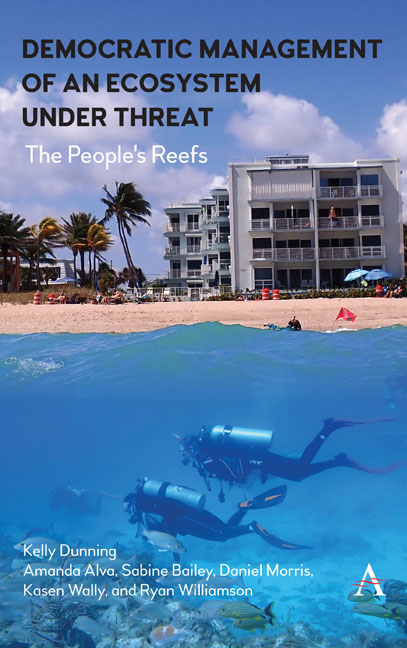Book contents
- Frontmatter
- Contents
- Miscellaneous Frontmatter
- Part 1 The Climate Change Challenge to Coral Reefs That Will Require Conservation Theory And Practice to Evolve
- Part 2 Case Studies
- Part 3 Summary and Conclusions
- Appendix Chapter 5
- Appendix Chapter 6
- Appendix Chapter 7
- Appendix Chapter 8
- Appendix Chapter 9
- Index
Chapter 2 - Climate Change, Coral Bleaching and Other Threats
Published online by Cambridge University Press: 28 February 2024
- Frontmatter
- Contents
- Miscellaneous Frontmatter
- Part 1 The Climate Change Challenge to Coral Reefs That Will Require Conservation Theory And Practice to Evolve
- Part 2 Case Studies
- Part 3 Summary and Conclusions
- Appendix Chapter 5
- Appendix Chapter 6
- Appendix Chapter 7
- Appendix Chapter 8
- Appendix Chapter 9
- Index
Summary
In recent decades, climate change has taken center stage as the single greatest threat facing modern coral reefs (Hughes et al., 2017a, 2017b). Atmospheric greenhouse gas concentrations have been increasing since the Industrial Revolution. The concentration of one commonly recognized contributor, carbon dioxide (CO2), has risen at 250 times its natural rate following the last Ice Age (NASA, 2020). Currently, the measurement of atmospheric CO2 stands at 415 ppm, the highest concentration in 650,000 years (NASA, 2020). As a result, the Earth's atmosphere and oceans are warming at an unprecedented rate (Hopkin, 2005). Over 90 percent of the warming that the planet has experienced in the last 50 years has occurred in the oceans themselves. From 1971 to 2010, 63 percent of the total increase in stored heat on our planet was captured by the oceans’ upper, sun-lit layers. Therefore, the oceans’ usefulness as a reservoir for storing thermal energy (heat) and CO2 may spell disaster for coral reefs. Because coral reef ecosystems are among the most climate-sensitive on Earth, requiring narrow temperature ranges to survive, they are extremely vulnerable to unprecedented warming events.
One catastrophic effect of climate change, a phenomenon known as coral bleaching, has become a well-documented and highly publicized process (Dispensa et al., 2003; Hughes et al., 2017a, 2018a, 2018b, Manzello, 2015). Because corals are sessile organisms (i.e., they are immobile), they rely on two sources of energy. First, they capture microscopic organisms in the water column using small tentacles armed with stinging cells called nematocysts. Second, corals depend on a symbiotic relationship with several specific groups of dinoflagellate microalgae (i.e., single-celled algae) called zooxanthellae—these microorganisms produce oxygen and energy for the corals via photosynthesis, exactly like plants on dry land, in exchange for shelter and shared nutrients.
Zooxanthellae also give corals their often-vibrant coloration ranging from orange to yellow to royal blue. Because physically capturing microorganisms as food only provides corals with about 10 percent of their energy, the zooxanthellae are essential for their survival (Forsman, 2005; Weis, 2008). However, when coral organisms are exposed to adverse environmental conditions for prolonged periods of time (e.g., warming ocean temperatures), corals exhibit a natural stress response known as “bleaching.” During this process, coral colonies expel the symbiotic zooxanthellae, revealing their underlying white calcium carbonate skeletons and losing these vital energy sources.
- Type
- Chapter
- Information
- Democratic Management of an Ecosystem Under ThreatThe People's Reefs, pp. 13 - 16Publisher: Anthem PressPrint publication year: 2023



